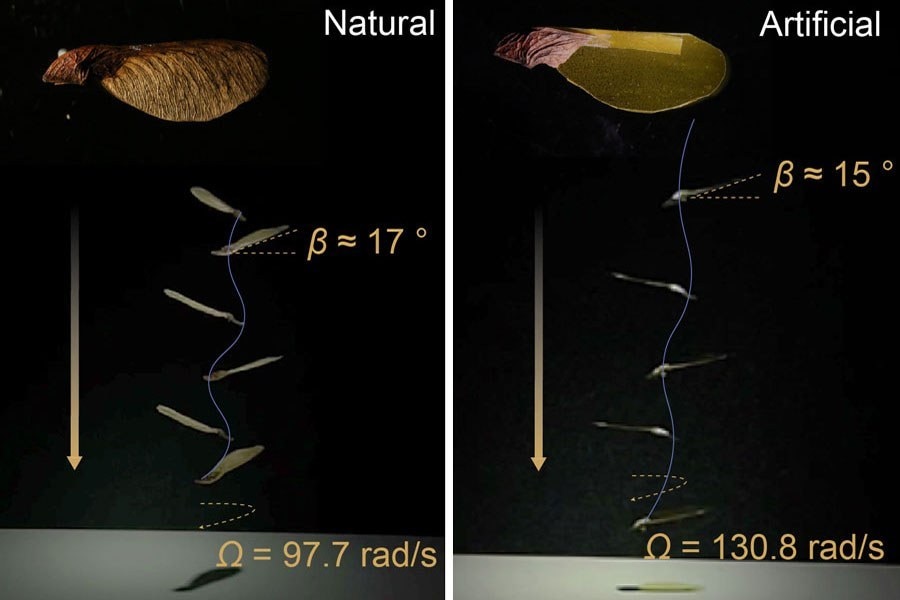
Image showing a natural maple samara (left) and artificial seed (right) while descending. (Image Credit: Jianfeng Yang / Tampere University)
Researchers at Tampere University, Finland, and the University of Pittsburgh collaborated to develop a robot that imitates a falling maple seed’s movement. The team believes it has practical applications like environmental monitoring, search-and-rescue, infrastructure monitoring, and air-dropping samples in the open sea, deserts, or mountains.
Last year, the team created a mini polymer-assembly robot with passive flying techniques --- replicating a dandelion seed. It featured a soft actuator to open or close its bristles in response to visible light excitation.
That team partnered up with the University Of Pittsburgh Swanson School Of Engineering’s Professor M. Ravi Shankar. They designed the robotic maple seed robot with a light-activated smart material for glide control. Maple samaras (dry fruit) have flying wings that help them disperse to new growth sites. While falling, the wings allow the seeds to rotate so that they glide in a gentle breeze. The wing’s configurations define the glide path.
They found inspiration in the maple samara to create azobenzene-based light-deformable liquid crystal elastomer, achieving reversible photochemical deformation to tune the aerodynamic properties.
This maple seed robot’s wind dispersal can be adjusted to achieve various gliding trajectories. The team suggests the artificial seed can be equipped with microsensors for environmental monitoring or used to deliver small soil samples.
“The artificial maple seeds outperform their natural counterparts in adjustable terminal velocity, rotation rate, and hovering positions, enhancing wind-assisted long-distance travel through self-rotation,”says Professor Hao Zeng.
“The tiny light-controlled robots are designed to be released into the atmosphere, utilizing passive flight to disperse widely through interactions with surrounding airflows. Equipped with GPS and various sensors, they can provide real-time monitoring of local environmental indicators like pH levels and heavy metal concentrations,” says Doctoral Researcher Jianfeng Yang Yang.
Have a story tip? Message me at: http://twitter.com/Cabe_Atwell
